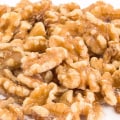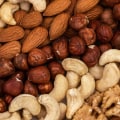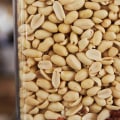A nasty toxic surprise Black walnut trees produce a toxic chemical called juglone, a chemical so strong that it can damage and even kill vegetative growth around these trees and is blamed for problems in horses that are exposed to black walnut shavings. The leaves and green peels of the fruits contain a large amount of tannins, which can lead to poisoning in people with more sensitive stomachs. Black walnuts produce a chemical called juglone, which is found naturally in all parts of the tree, especially in buds, nut shells, and roots. The leaves and stems contain smaller amounts of juglone, which leaches into the soil after falling.
The highest concentration of juglone occurs in the soil directly under the tree canopy, but highly sensitive plants can exhibit symptoms of toxicity beyond the canopy drip line. Because decaying roots can release juglone, toxicity can occur for several years after a tree has been removed. Department of Agriculture Zones 4 to 9 and prized as a logging tree, black walnut (Juglans nigra) can cause a horse to become very sick if the animal's skin comes into contact with fresh parts of the tree. Also watch out for black walnuts around dogs; your canine friends can get sick if they eat moldy black walnuts or their hooves.
Are black walnuts poisonous to horses. Dogs can also get sick if they eat moldy black walnuts. Native to the eastern United States and extending to Canada, black walnut can reach 100 feet in height, with an equally wide extension. Walnuts are edible, although it can take up to 20 years for this tree to produce a significant harvest, reports the Missouri Botanical Garden.
Black walnut wood is often used to make furniture. Like other types of walnut trees, Juglans nigra contains a chemical called juglone that can inhibit the growth of other plants. According to the Morton Arboretum, juglone is found in all parts of black walnut, with shells and roots that have higher concentrations of this chemical than leaves. Juglone seeps into the soil from roots and decaying matter and remains present even after the tree is gone.
While there are plants tolerant to juglones, other species will wither and die if grown near black walnut trees. Juglon-sensitive plants include rhododendrons and peonies, as well as nightshade family crops, such as tomatoes and potatoes. Although cats are not affected by black walnuts, according to the ASPCA, dogs can lose coordination if they eat the wood shavings of this tree. Dogs can also become seriously ill if they consume black walnuts that have become moldy.
According to Colorado State University, fallen walnuts and their shells can develop mold that contains Penitrem A, a mycotoxin. Within hours of eating a moldy nut, a dog may experience seizures. Rapid breathing, urination and hyperthermia are other symptoms of Penitrem A in dogs. The animal's pupils may dilate.
Mycotoxicosis is an emergency that requires immediate hospitalization and treatment by a veterinarian. According to PetMD, dogs can recover from mycotoxicosis if they get immediate medical attention. Treatment may include pumping the animal's stomach. If the dog does not suffer seizures, the veterinarian may administer activated charcoal to absorb Penitrem A in the animal's digestive tract.
Black walnuts do not need to be contaminated with Penitrem A to make the horse seriously ill, and they do not need to be eaten either. A horse can suffer from limp and cramps if its skin comes into contact with any part of the black walnut tree, so fresh wood shavings of this species should never be used for the horse's bedding. According to Colorado State University, it's not entirely clear what substance in black walnut trees causes horses to get sick, although the culprit is suspected to be juglone, the same chemical that damages many plants. According to the University of Minnesota Extension, bedding containing only 20 percent fresh wood shavings is enough to make a horse sick.
The first step in treating a horse that has had contact with black walnut parts is to wash the animal's legs with soapy water to prevent the absorption of toxins. Horses suffering from black walnut poisoning are often treated with nonsteroidal anti-inflammatory drugs. Black walnut poisoning of canines and horses is well documented. Although walnut is most commonly thought, when subjected to mold, to be the toxic component of the tree, studies have shown that eating wood from black walnut can also cause poisoning in dogs.
Horses exposed to black walnut shavings can develop laminitis (an inflammatory condition in the hoof wall) that causes lameness and pain in as little as 8 hours of exposure. Ponies can suffer breathing difficulties when exposed. Walnut leaves can be made into compost because juglone toxin breaks down when exposed to air, water and bacteria. The toxic effect may degrade in two to four weeks.
In soil, decay can take up to two months after live walnut has been removed. Mulch or black walnut wood chips are not recommended for juglone sensitive plants. However, composting wood chips for a minimum of six months allows the chemical to break down to a safe level, even for juglone sensitive plants. Under the tree, this walnut chemical seriously damages annuals, garden vegetables, fruit trees, and some broadleaf perennials.
Horses and ponies can get acute laminitis, an inflammation of the foot, where black walnut wood chips or sawdust are used for barn bedding. Black walnut and butternut produce the most juglone and can cause toxic reactions with other plant species growing in their vicinity. Other species with lower content are the common walnut (Juglans regia) or the white walnut (Juglans cineraria). Most trees, shrubs, and vines can be grown near black walnut trees, with little or no effect on plant health.
If you have black walnut on your property, strict adherence to a raking protocol must be followed daily. Of all the nut species, the one with the largest quantity is the black walnut (Juglans nigra). Walnuts produce some substances called juglones that are stored in their tissues, especially in their roots. Most members of the walnut family (Juglandaceae) produce a chemical called juglone (5-hydroxy-alphanaphthoquinone) that occurs naturally in all parts of these plants.
Black walnut leaves, bark and wood chips should not be used as garden mulch or compost on garden plants. In 8th-century France, Charlemagne ordered that walnuts be planted in his orchards; tithes in French churches could be paid in walnuts; and walnuts were considered desirable enough for French cities to appoint official walnut meters to protect nut consumers from fraud. . .


